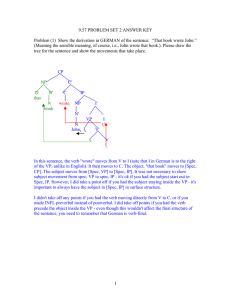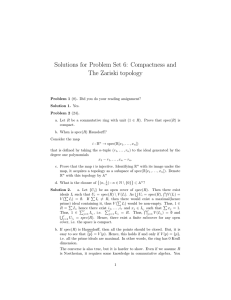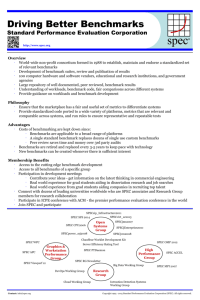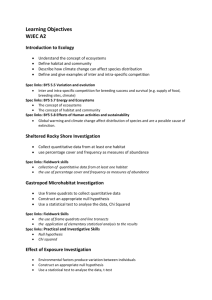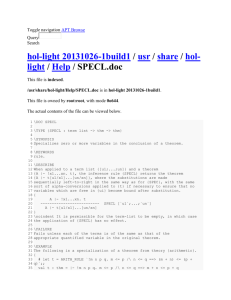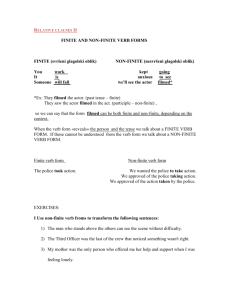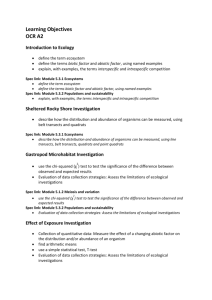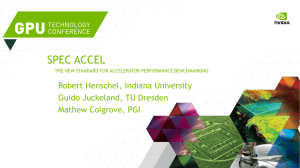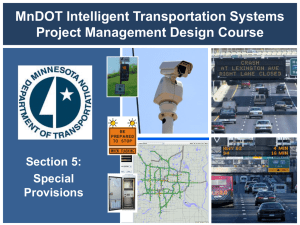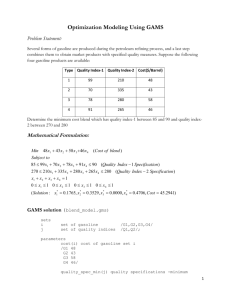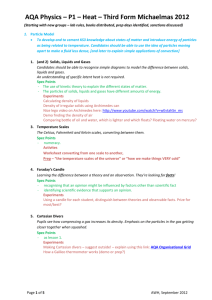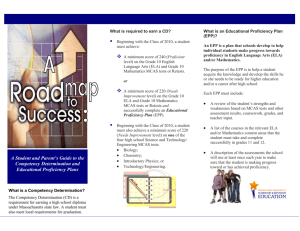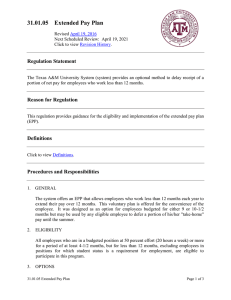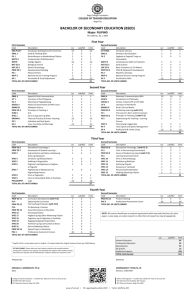Spell Out the Edge, here and only once!: the EPP or how to get your
advertisement
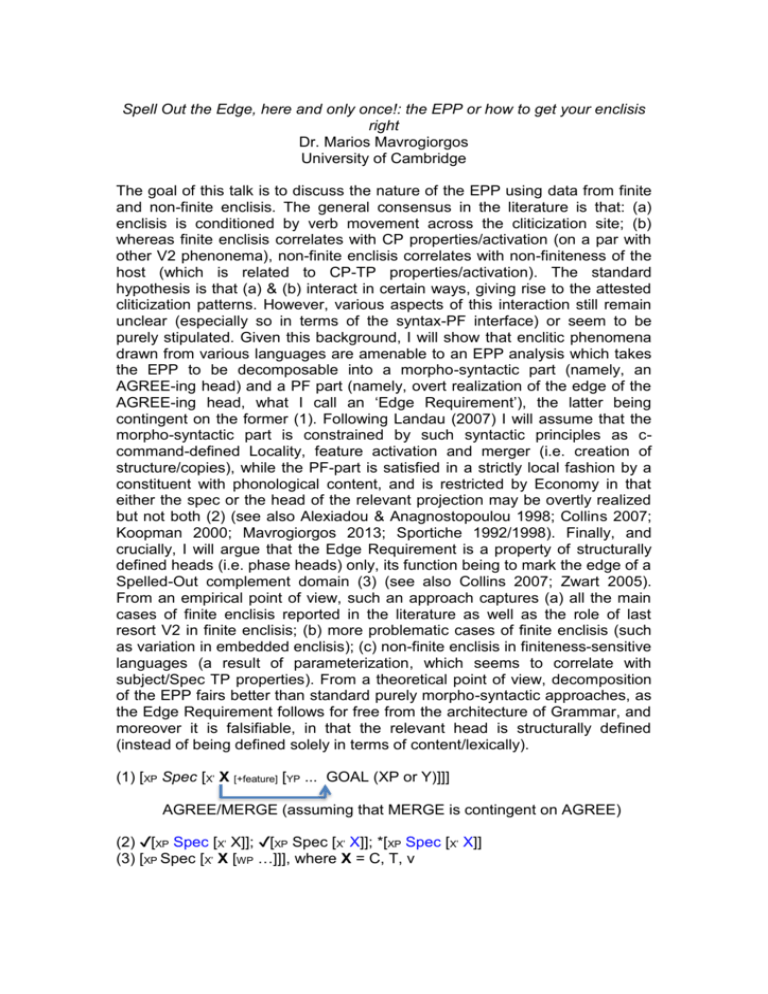
Spell Out the Edge, here and only once!: the EPP or how to get your enclisis right Dr. Marios Mavrogiorgos University of Cambridge The goal of this talk is to discuss the nature of the EPP using data from finite and non-finite enclisis. The general consensus in the literature is that: (a) enclisis is conditioned by verb movement across the cliticization site; (b) whereas finite enclisis correlates with CP properties/activation (on a par with other V2 phenonema), non-finite enclisis correlates with non-finiteness of the host (which is related to CP-TP properties/activation). The standard hypothesis is that (a) & (b) interact in certain ways, giving rise to the attested cliticization patterns. However, various aspects of this interaction still remain unclear (especially so in terms of the syntax-PF interface) or seem to be purely stipulated. Given this background, I will show that enclitic phenomena drawn from various languages are amenable to an EPP analysis which takes the EPP to be decomposable into a morpho-syntactic part (namely, an AGREE-ing head) and a PF part (namely, overt realization of the edge of the AGREE-ing head, what I call an ‘Edge Requirement’), the latter being contingent on the former (1). Following Landau (2007) I will assume that the morpho-syntactic part is constrained by such syntactic principles as ccommand-defined Locality, feature activation and merger (i.e. creation of structure/copies), while the PF-part is satisfied in a strictly local fashion by a constituent with phonological content, and is restricted by Economy in that either the spec or the head of the relevant projection may be overtly realized but not both (2) (see also Alexiadou & Anagnostopoulou 1998; Collins 2007; Koopman 2000; Mavrogiorgos 2013; Sportiche 1992/1998). Finally, and crucially, I will argue that the Edge Requirement is a property of structurally defined heads (i.e. phase heads) only, its function being to mark the edge of a Spelled-Out complement domain (3) (see also Collins 2007; Zwart 2005). From an empirical point of view, such an approach captures (a) all the main cases of finite enclisis reported in the literature as well as the role of last resort V2 in finite enclisis; (b) more problematic cases of finite enclisis (such as variation in embedded enclisis); (c) non-finite enclisis in finiteness-sensitive languages (a result of parameterization, which seems to correlate with subject/Spec TP properties). From a theoretical point of view, decomposition of the EPP fairs better than standard purely morpho-syntactic approaches, as the Edge Requirement follows for free from the architecture of Grammar, and moreover it is falsifiable, in that the relevant head is structurally defined (instead of being defined solely in terms of content/lexically). (1) [XP Spec [X’ X [+feature] [YP ... GOAL (XP or Y)]]] AGREE/MERGE (assuming that MERGE is contingent on AGREE) (2) ✔[XP Spec [X’ X]]; ✔[XP Spec [X’ X]]; *[XP Spec [X’ X]] (3) [XP Spec [X’ X [WP …]]], where X = C, T, v


